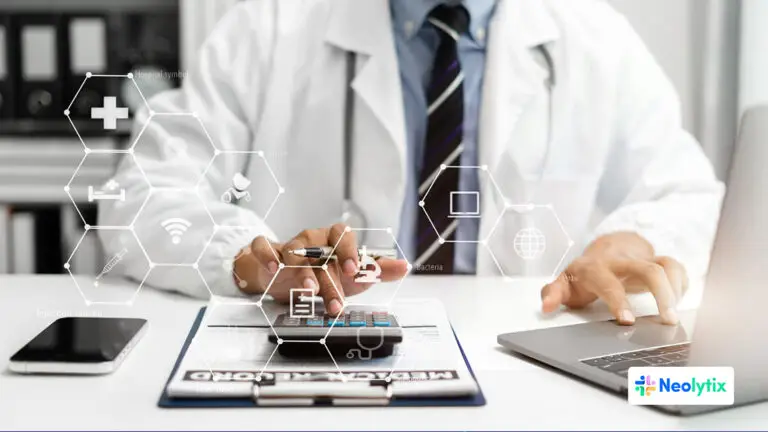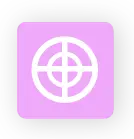Remote Patient Monitoring (RPM) is transforming the healthcare landscape by enabling continuous patient care outside traditional clinical settings while providing additional revenue streams for providers.
Additionally, RPM offers a pathway to enhanced revenue streams while improving patient outcomes. This article explores how adopting RPM solutions can drive significant revenue growth for medical practices.
Definition of Remote Patient Monitoring (RPM)
Remote Patient Monitoring (RPM) involves the use of technology to collect and analyze patients’ health data remotely. Utilizing devices such as blood pressure monitors, glucose meters, and wearable sensors, RPM systems transmit physiological data to healthcare providers in real-time.
This continuous flow of health data enables early interventions, reduces the need for frequent office visits, and supports proactive patient care. By integrating RPM into their practices, healthcare providers can enhance the quality of care and operational efficiency.
Importance of Revenue Generation in Healthcare Practices
With rising operational costs and the need to deliver high-quality care, finding innovative solutions to increase revenue is critical. RPM offers a dual benefit by improving patient care and generating additional revenue streams through new billing opportunities and enhanced patient retention.
Adopting RPM solutions can help healthcare practices remain financially viable while meeting the evolving demands of patient care.
Benefits of RPM for Patients and Providers
Improved Patient Engagement and Satisfaction
Continuous monitoring through RPM enhances patient engagement by providing regular feedback and reminders about their health. This proactive approach empowers patients to take an active role in managing their health, leading to higher satisfaction levels and better health outcomes.
Enhanced Care Coordination and Chronic Disease Management
RPM facilitates better care coordination, especially for patients with chronic conditions. Real-time data allows healthcare providers to track disease progression, adjust treatment plans promptly, and coordinate care across different providers, improving the overall process of managing chronic diseases.
Early Detection of Health Issues and Preventive Care
By continuously monitoring physiological data, RPM enables early detection of potential health issues. This early intervention can prevent complications, reduce emergency room visits, and support preventive care, ultimately leading to better patient health and reduced healthcare costs.
Understanding Remote Patient Monitoring (RPM)
Explaining RPM Technology and Its Components
RPM technology consists of various devices, software, and infrastructure that work together to monitor patients’ health remotely. Key components include:
- Devices: Blood pressure monitors, glucometers, pulse oximeters, and wearable sensors.
- Software: Platforms that collect, store, and analyze health data, providing actionable insights to healthcare providers.
- Monitoring: Continuous tracking and assessment of patient data to ensure timely interventions and proactive healthcare management.
- Infrastructure: Secure communication networks that ensure data is transmitted reliably and confidentially from patients’ homes to healthcare facilities.
Outsourcing companies offer RPM services without placing additional resource pressure on healthcare providers. By leveraging specialized staff and advanced technology platforms, these companies handle the setup, monitoring, and management of RPM programs.
Revenue Opportunities with RPM Adoption
- Increased Patient Volume and Retention
Attracting New Patients with Advanced Monitoring Services
Offering RPM services can attract new patients seeking advanced healthcare solutions. The convenience and comprehensive care provided by RPM can differentiate a practice in a competitive market, drawing patients looking for continuous health monitoring.
Fostering Patient Loyalty through Continuous Care
RPM fosters patient loyalty by providing consistent and personalized care. Patients are more likely to stay with a practice that offers reliable monitoring and proactive health management, leading to higher patient retention rates.
- Enhanced Billing Opportunities
Reimbursement Models and Billing Codes for RPM Services
RPM opens up new billing opportunities through specific CPT codes designed for remote monitoring services. Healthcare providers can bill for initial setup, monthly monitoring, and additional care management time, maximizing revenue streams.
Maximizing Revenue Streams with Remote Monitoring
Leveraging RPM effectively can significantly boost revenue. By understanding and utilizing reimbursement codes such as CPT 99453, 99454, 99457, and 99458, practices can ensure they are compensated for the comprehensive care they provide through RPM programs.
- Reduced Hospital Readmissions and Associated Costs
Preventing Adverse Events and Emergency Room Visits
RPM helps in early identification of potential health issues, reducing the likelihood of adverse events and emergency room visits. This proactive care approach not only enhances patient health but also reduces costs associated with hospital readmissions.
Lowering Healthcare Expenditure through Proactive Monitoring
Continuous monitoring allows for early interventions, which can prevent costly treatments and hospital stays. This proactive approach leads to significant savings for both healthcare providers and patients, contributing to overall financial sustainability.
- Improved Efficiency and Staff Productivity
Streamlining Workflow and Resource Allocation
RPM optimizes workflow by automating routine monitoring tasks, allowing healthcare staff to focus on more critical aspects of patient care. This efficient use of resources enhances productivity and reduces operational costs.
Time Savings and Increased Capacity for Patient Care
With RPM handling regular monitoring and data collection, healthcare providers can save time and increase their capacity to see more patients. This improved efficiency translates to higher revenue and better patient care.
Start Benefiting From RPM Today
With no upfront investments, fees only on successful reimbursements, and complementary billing, Neolytix stands out as a trusted RPM partner.
Overcoming Challenges and Considerations
- Initial Implementation Costs and ROI Calculation
Budgeting for RPM Technology Acquisition and Training:
Implementing RPM technology involves initial costs for purchasing medical devices, software, and infrastructure. Healthcare organizations must budget for these acquisitions and consider training costs to ensure staff can effectively use the new technology. Financial planning should account for the expenses related to device procurement, software licensing, and ongoing maintenance.
Estimating Return on Investment (ROI) for Financial Planning:
Calculating the ROI of RPM is crucial for justifying the initial expenditure. By analyzing potential revenue increases from enhanced billing opportunities and cost savings from reduced hospital readmissions, practices can estimate the financial benefits of RPM. Consider the expected increase in patient volume and retention, which contributes to long-term revenue growth.
- Compliance and Regulatory Considerations
Ensuring HIPAA Compliance and Data Security:
Data privacy and security are paramount in RPM implementations. Ensuring HIPAA compliance protects patient data and maintains trust. Implementing robust security measures, such as encryption and secure data transmission, safeguards sensitive health information.
Adhering to Medicare and Medicaid Guidelines for Reimbursement:
Navigating the regulatory landscape is essential for maximizing reimbursement opportunities. Understanding and adhering to Medicare and Medicaid guidelines ensures that RPM services are eligible for reimbursement, which is vital for financial viability.
- Integration with Existing Systems and Infrastructure
Compatibility with Electronic Health Records (EHR) and Practice Management Software:
Seamless integration of RPM data with existing EHR systems and practice management software is crucial for operational efficiency. Compatibility ensures that health data from RPM devices is easily accessible and actionable within the current clinical workflows.
Seamless Integration of RPM Data into Clinical Workflows:
Integrating RPM data into clinical workflows optimizes operations and enhances patient care. This integration enables healthcare providers to make informed decisions based on real-time physiological data, improving the management of chronic conditions and overall patient outcomes.
Best Practices for Successful RPM Implementation
Selecting the Right RPM Solution for Your Practice
Assessing Features, Scalability, and Vendor Reputation:
Choosing the right RPM solution involves evaluating the features and scalability of the technology. Consider the vendor’s reputation and track record in delivering reliable RPM services. Selecting a solution that can grow with your practice ensures long-term success.
Conducting Pilots and Trials to Evaluate Effectiveness:
Pilots and trials are essential for assessing the effectiveness of RPM solutions before full-scale implementation. These trials provide valuable insights into how the technology integrates with existing systems and its impact on patient care and revenue.
Training Staff and Educating Patients for Successful Adoption
Providing Comprehensive Training on RPM Technology and Protocols:
Comprehensive training for healthcare staff is critical for successful RPM adoption. Ensure that all team members understand the technology, protocols, and procedures associated with RPM services.
Educating Patients on Device Usage, Data Interpretation, and Privacy:
Patient education is equally important. Empower patients by teaching them how to use RPM devices, interpret data, and understand privacy considerations. Well-informed patients are more likely to engage with the technology and adhere to monitoring protocols.
Monitoring and Evaluating Performance Metrics for Continuous Improvement
Establishing Key Performance Indicators (KPIs) for RPM Success:
Defining KPIs helps measure the success of RPM implementation. Common KPIs include patient engagement levels, reduction in hospital readmissions, and revenue generated from RPM services. Monitoring these indicators provides insights into the program’s effectiveness.
Regular Review and Analysis of Data to Optimize Processes and Outcomes:
Continuous improvement is achieved through regular review and analysis of RPM data. By evaluating performance metrics, healthcare organizations can optimize processes, enhance patient care, and increase revenue.
What Are the Benefits of Outsourcing RPM with Us?
Outsourcing Remote Patient Monitoring (RPM) offers significant advantages, alleviating resource and financial concerns. Partnering with Neolytix allows healthcare organizations to leverage advanced technology and expert staff without the need for large investments or extensive training.
- Expertise and Efficiency: Neolytix handles RPM setup, monitoring, and management, enabling providers to focus on patient care.
- Cost-Effective Solution: We supply all necessary tools and support, reducing financial pressure and allowing better resource allocation.
- Comprehensive Services: Neolytix also offers integrated solutions, including Healthcare Automation and Chronic Care Management Solutions, optimizing practice management for financial success.
Transforming Revenue and Patient Care With Remote Patient Monitoring
Healthcare providers are encouraged to adopt Remote Patient Monitoring (RPM) to enhance patient care and achieve financial growth. RPM offers numerous benefits, including improved patient outcomes and increased revenue, making it a valuable investment for any medical practice.
By leveraging Neolytix’s RPM services, along with our comprehensive solutions like Revenue Cycle Management, Medical Billing, and Healthcare Recruitment, practices can ensure optimal operational efficiency and financial success without the stress of managing these components internally.
Partner with Neolytix to navigate this transformation and fully benefit from RPM and our range of expert services designed to optimize your practice.
Schedule a no-obligation free consultation today to learn more about how we can help your practice thrive.
FAQs: Understanding RPM and Its Benefits
Remote Patient Monitoring (RPM) is the use of technology to collect and transmit health data from patients to healthcare providers in real-time, allowing for continuous monitoring and timely interventions.
RPM improves patient care by enabling early detection of health issues and providing continuous monitoring, while healthcare providers benefit from increased efficiency and the ability to manage more patients effectively.
RPM can monitor various chronic conditions such as heart disease, diabetes, hypertension, and respiratory conditions, as well as post-surgical recovery and other acute health issues.
RPM generates revenue through new billing opportunities for monitoring services, reducing hospital readmissions, and attracting new patients seeking advanced healthcare solutions.
Reimbursement options for RPM services include specific CPT codes that cover patient setup, device supply, and ongoing monitoring, which are billable to Medicare, Medicaid, and private insurers.
RPM attracts new patients by offering advanced care solutions and fosters loyalty through continuous, personalized care, leading to higher patient retention rates.
Yes, RPM can significantly reduce hospital readmissions by enabling early intervention and continuous monitoring, which prevents complications and emergency visits.
Initial costs include purchasing RPM devices, software licensing, and training for staff, but these investments are offset by increased revenue and cost savings over time.
Healthcare practices can ensure compliance by implementing robust data security measures, such as encryption and secure communication protocols, to protect patient information.
Challenges include ensuring compatibility with existing Electronic Health Records (EHR) systems and integrating RPM data seamlessly into clinical workflows.
Providers should assess the features, scalability, and vendor reputation and conduct pilots to evaluate the effectiveness of different RPM solutions before full-scale implementation.
Staff training should cover the use of RPM devices, data interpretation, patient communication protocols, and privacy compliance to ensure successful adoption.
Patients can be educated through comprehensive training sessions, user-friendly guides, and continuous support to ensure they understand how to use RPM devices and interpret their health data.
Key metrics include patient engagement levels, reduction in hospital readmissions, patient satisfaction, and revenue generated from RPM services.
Many practices have reported significant revenue increases by adopting RPM, as evidenced by improved patient outcomes, higher patient retention, and enhanced billing opportunities.



